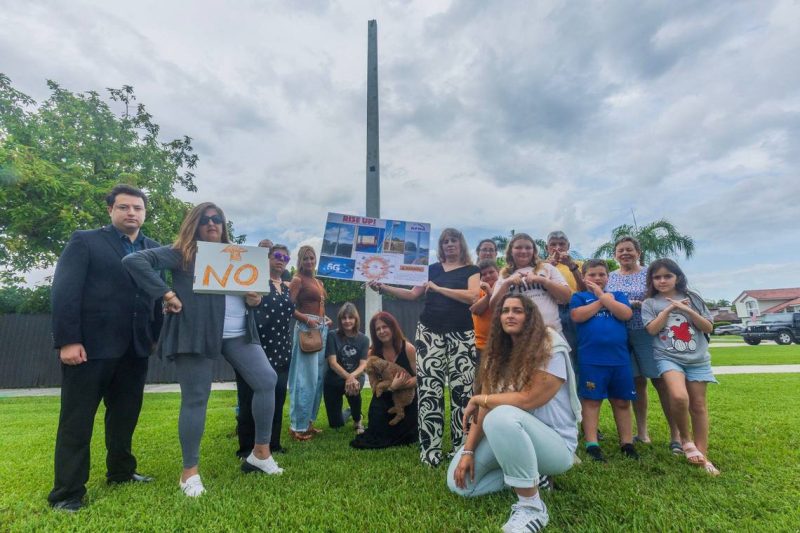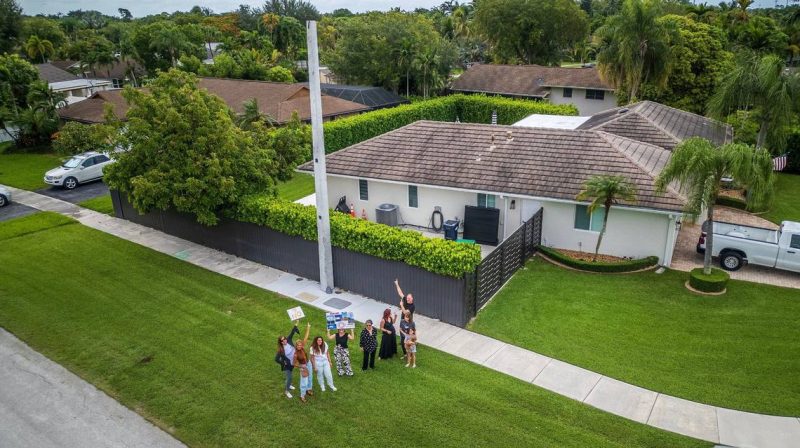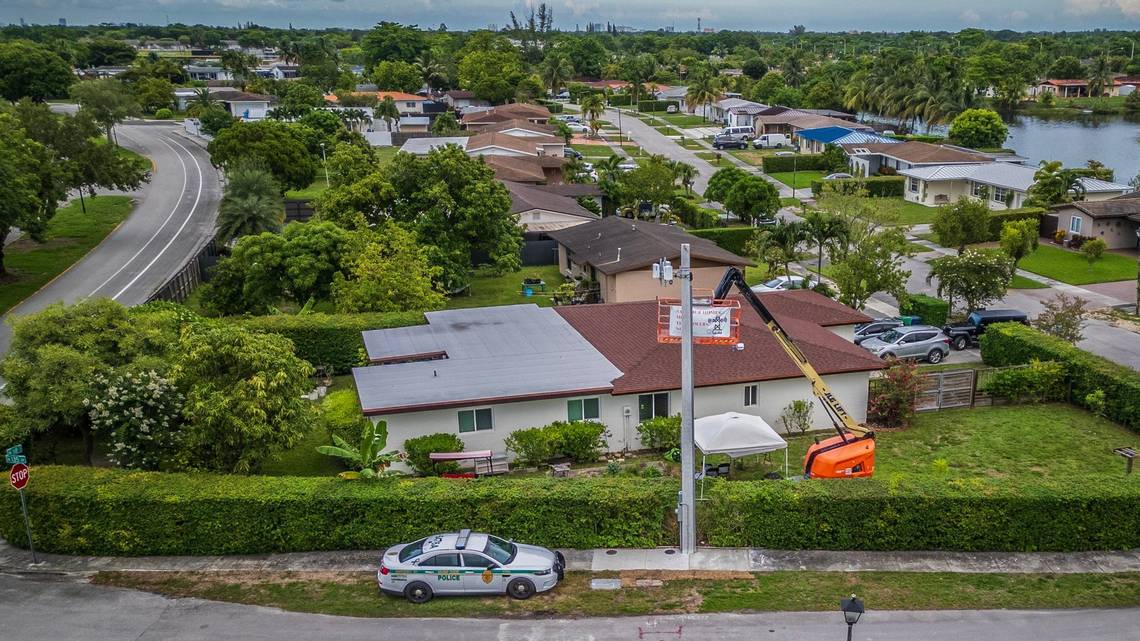The controversy surrounding the construction of 5G towers in Kendall, Miami, reflects a broader global debate on the potential health risks associated with electromagnetic radiation from cell phone towers. Residents are increasingly vocal about their concerns, driven by various studies and reports suggesting that prolonged exposure to electromagnetic fields (EMFs) could have adverse health effects.
Community Concerns and Legislative Challenges

When Lissette Monzon returned to her Kendale Lakes home on April 1, she found a pamphlet from Crown Castle, a telecommunications company, informing her about upcoming infrastructure updates. The very next day, a 35-foot cement pole, part of the new 5G network, was erected near her backyard. This rapid and seemingly uncommunicated installation is a primary concern for Monzon and many of her neighbors.
Residents have been battling the construction of these towers, fearing potential health risks and property devaluation. Despite Crown Castle’s assurances of community involvement, many feel left out of the decision-making process. Miami-Dade County’s ability to regulate these installations is severely limited by state legislation, which only allows local authorities to ensure compliance with the Americans With Disabilities Act.
The Science Behind EMF Concerns
Major Studies Indicating Health Risks
Numerous studies have investigated the potential health risks associated with cell phone-level electromagnetic radiation. Some of the most notable research includes:
- Interphone Study: This international study, coordinated by the International Agency for Research on Cancer (IARC), examined the correlation between mobile phone use and head and neck cancers. While it found no definitive link, there were suggestions of increased risk for heavy users.
- Hardell Group Studies: Swedish oncologist Lennart Hardell and his team have conducted several studies suggesting a link between long-term mobile phone use and glioma, a type of brain tumor.
- CERENAT Study: A French study that also indicated a possible increased risk of brain tumors associated with heavy mobile phone use.
- U.S. National Toxicology Program (NTP): This extensive study found “clear evidence” of cancer in male rats exposed to high levels of RF radiation, sparking significant debate and further research into non-ionizing radiation’s potential effects.
- Ramazzini Institute Study: An Italian study that supported the NTP findings, showing an increase in malignant schwannomas in the heart of male rats exposed to RF radiation.
- REFLEX Project: A European Union-funded project that found evidence of DNA damage in cells exposed to RF radiation.
- BioInitiative Report: A compilation of studies and reports by an international group of scientists and public health experts, calling for more stringent safety standards for RF exposure based on evidence of biological effects at lower intensities than current standards.
- Dr. Henry Lai’s Work: Dr. Lai’s research has highlighted DNA damage in cells exposed to RF radiation, supporting the notion that non-thermal effects could be significant.

Therapeutic Potential of RF-EMF
Despite the concerns, some recent reviews suggest that RF-EMF might have untapped therapeutic potential. For instance, certain frequencies of RF radiation might aid in damaging cancer cells while minimizing adverse effects on healthy tissues. This perspective opens up new avenues for cancer treatment and challenges the traditional view that non-ionizing radiation is biologically inert except for its heating properties.
One notable example is the FDA-approved TheraBionic treatment, which uses RF radiation at power levels up to 1000 times lower than those emitted by cell phones to treat inoperable liver cancer. This treatment operates through non-thermal interactions at the cellular or molecular level, including resonance effects, disruption of cellular signaling, and potential modulation of the immune system. This innovative approach underscores the complexity of RF-EMF interactions and suggests that there could be beneficial uses alongside the potential risks.
The Debate Continues
In Kendall, residents like Monzon and Gutierrez continue to protest against the installation of 5G towers. They argue that these structures are not only eyesores but also potential health hazards. The warning labels on the towers, including those about Chromium and RF waves, add to their anxiety. Crown Castle maintains that the emissions are within Federal Communications Commission (FCC) guidelines, which state there are no known health hazards from RF emissions at the levels used by these towers.
Miami-Dade County Commissioner Raquel Regalado has been vocal about the need for more transparency and community involvement. Efforts are being made to create an online platform and email system for residents to view and be notified of permit applications. These measures aim to provide residents with more advance notice and involvement in the construction of such infrastructure.
Conclusion
The controversy in Kendall reflects a broader global debate on the safety and regulation of EMF radiation from mobile networks. While scientific evidence highlights potential health risks, it also suggests possible therapeutic benefits. Balancing these aspects is crucial for policymakers, researchers, and the telecommunications industry.
As 5G technology continues to expand, it is imperative to address the concerns of communities and ensure that further research is conducted to fully understand the implications of long-term exposure to RF radiation. Transparency, community involvement, and adherence to the latest scientific findings will be key in navigating this complex issue








